For those who have never heard of GAME: the acronym stands for Global Approach by Modular Experiments, an internationally oriented research and training program in marine ecology that is in existence for over two decades now. Every year, young researchers from around the world – from Finland to Malaysia, from Japan to Chile – work together on a common research question. Identical experiments are conducted at eight different locations so that the results, which are obtained within six months, can be compared across latitudes, climatic conditions, and biogeographical zones.
In a time that confronts us with global environmental crises, such as climate change and the massive loss of biodiversity, we need precisely such large-scale, coordinated research approaches. Because only by understanding how the reaction of ecological processes to anthropogenic pressures is shaped by environmental conditions, we can make well-founded statements about their stability, vulnerability, or adaptability – and ultimately develop better conservation measures.
And who is GAME 2025? We are 16 master’s students from various countries—Japan, Malaysia, the Philippines, Cape Verde, Wales, Finland, Chile, and Germany—who, after a one-month long preparation course at GEOMAR in Kiel travelled in teams of two persons to eight countries to collect data. Everything is coordinated by Mark Lenz. Since 2004, the Kiel native has been the scientific coordinator of the international research and training program GAME at GEOMAR.
And who are we?

Hola from Spain!
Anna [27] from Osnabrück and Verena [27] from Potsdam are Team Spain 2025.
Anna
I began my biological career in Osnabrück with a Bachelor’s degree in Biosciences. I continued within the Master’s program, “From Molecule to Organism,” also in Osnabrück. During my studies, I had the opportunity to explore many different fields and build a broad knowledge base. Two marine biology excursions, in particular, captured my enthusiasm: one to the Biologische Anstalt Helgoland, and another to the Station Biologique de Roscoff on France’s north-western coast. Working in marine biology was so rewarding that I wanted to write my master’s thesis in this field. Since there is unfortunately no sea in Osnabrück, I looked for alternatives and discovered GAME. What fascinates me about the program is its global character and excellent training, which prepares you for a career in science—on top of that, the research topic of 2025 itself is truly captivating.
Verena
Originally, I come from the southwest, from the beautiful and most sunny place in Germany – Freiburg – but started studying biology in Tübingen. For my Bachelor thesis, I already worked with aquatic organisms and investigated the behaviour and personalities of weakly-electric fish (Apteronotus leporhynchus). After the time in the south of Germany, I wanted a change. Change in place and change in study and this brought me to Potsdam and to Geoecology. Through my studies, I already had a lot to do with global concepts and that was one of the reasons why I wanted to be part in an international program like GAME.
And now? We are in Spain. More precisely….
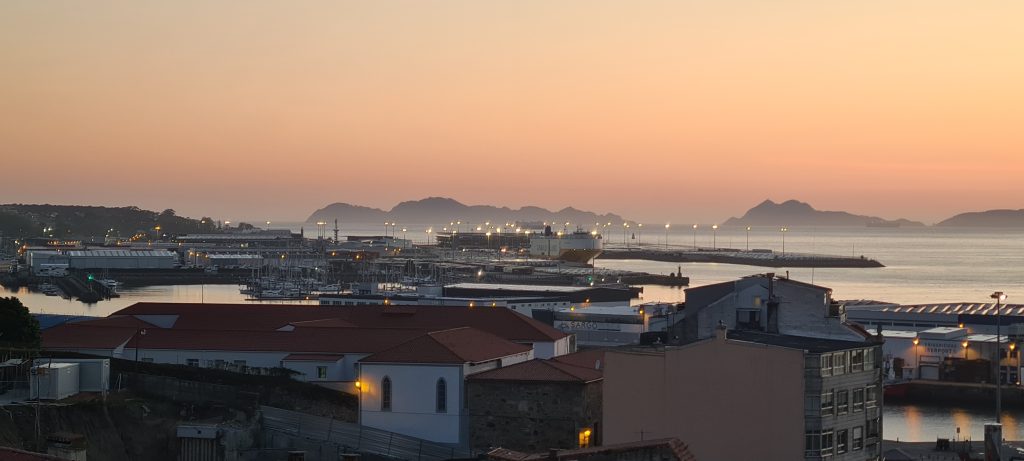
…in Vigo. For many, it may be just a tiny dot on the map in the far northwest of Spain—if they even know it at all. Nestled between dense pine forests, the rough Atlantic Ocean, an impressive mountain backdrop, and a view on the Cíes Islands (part of the Islas Atlántica de Galicia National Park), Vigo will be our new home and workplace for the next six months.
The name might suggests that Vigo is a small town. The name comes from the Latin vicus spacorum, it means “small village.” However, it is the largest city in Galicia, located in northwest Spain on the Ría de Vigo, a bay that extends 15 km inland to Arcade (Santiago).
The proximity to the Atlantic Ocean and the surrounding mountains not only offers a breathtaking panorama, which can be admired from many viewpoints (Mirador) in and around Vigo, but also means that this region is blessed with very high rainfall. Vigo records an annual rainfall of 1787 mm, compared to only 750 mm in Kiel.
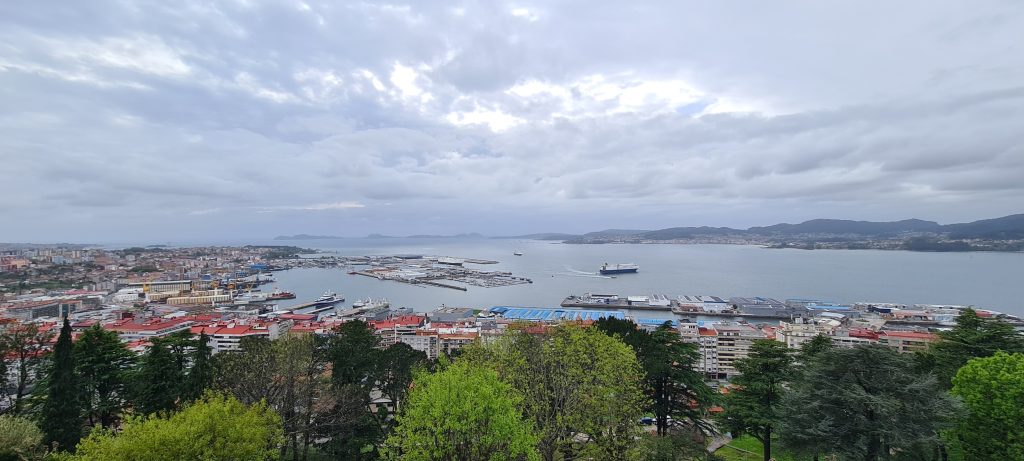
Due to the city’s hilly location, numerous escalators and elevators make everyday life and our initial exploration of the city easier.
One of our first destinations was the Monte O Castro fortress, which towers 130 meters above Vigo and offered us a first magnificent view of the city, the other shore, and the offshore islands.
On the way back to the harbour, we passed through the old town, among other places. Numerous restaurants, taverns, and tapas bars invite you to sample the many delicacies of the region. Vigo is particularly known for its seafood, especially oysters, which are cultivated in the numerous oyster farms in the bay. The wide Rua do Príncipe, which is perfect for a shopping trip, leads to the waterfront promenade. But we’re not the only ones who’ll be heading for the main shopping street. Another thing we quickly noticed: Every day, many pilgrims walk through the city on their way to Santiago de Compostela. The end point of the Way of St. James is only about 80 km from our port city. A destination that’s definitely on our bucket list.
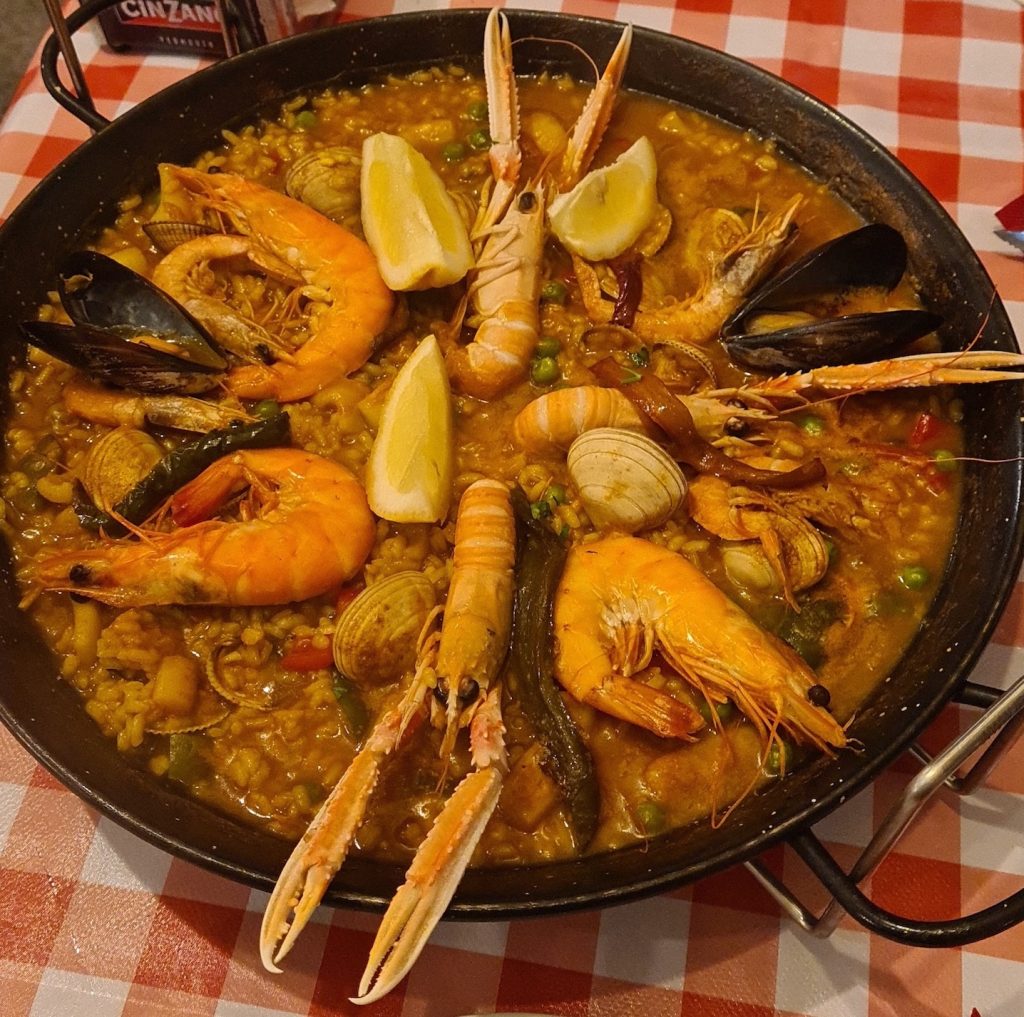
Down at the port, instead of beaches and sand, there are numerous ships to admire. From cruise ships to industrial vessels to yachts, there is something for every ship enthusiast. Vigo’s harbours have not only a Mediterranean flair but also a strong industrial port city character.
In a few weeks, one of these ports, in the Bouzas district, will host our field experiment.
But first, we headed west, about 20 minutes from the center, along the coast, past beautiful beaches and scenery, to the Centro Oceanográfico de Vigo.
There, we were warmly welcomed by our two team supervisors, Eva Cacabelos and Paplo Otero. First on the agenda, of course, was a tour of the institute – beautifully situated, right on the rugged Atlantic coast. Up on the roof terrace, with coffee in hand and a sea breeze around us, we turned to the real reason for our stay: our master’s thesis and this year’s GAME project, which is themed “ALAN.” You’ll find out exactly what’s behind it and what initial difficulties we encountered in a moment.
But first, a moment to take it all in and enjoying the view of the Cíes Islands.
Before the hustle and bustle of summer begins, we should definitely take the ferry across and ideally camp there for a night. Not only do the paradisiacal beaches and crystal-clear water attract hundreds of visitors every year, the nature reserve also serves as a refuge for countless bird species.
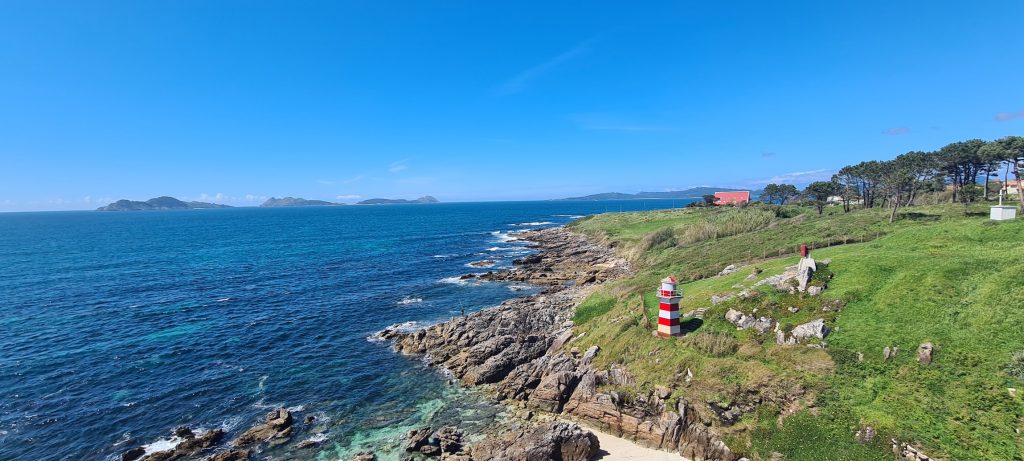
The Centro Oceanográfico de Vigo has been conducting marine research since 1917 and is part of the IEO (Instituto Español de Oceanografía). This, in turn, was founded in 1914 and is now part of the Spanish Ministry of Science, Innovation and Universities. The IEO consists of nine centers: Madrid (headquarters), Vigo, A Coruña, Cádiz, Málaga, Gijón, Murcia, Palma de Mallorca, and Santa Cruz de Tenerife. The research conducted at the Centro Oceanográfico de Vigo supports government advice and focuses on three core areas: aquaculture, marine and environmental protection, and fisheries.
Here, we will also investigate a current but little-researched environmental topic: How does artificial light at night (ALAN) affect the growth of epiphytes on macroalgae? Our experiment will take place directly at the coast, where urban light and natural darkness collide—an exciting setting for a question whose relevance grows with every illuminated city.
But why light – and why at night? Artificial light has become an integral part of our everyday lives. This is especially true along the coasts – where cities are growing, streetlights illuminate the night sky, and industrial plants operate around the clock. A look at satellite images of the Earth at night clearly shows it: Our coasts are glowing. And with each year, there are more lights – and they are getting brighter.
The impact of this constant lighting is well documented scientifically. ALAN – Artificial Light at Night – disrupts our natural day-night rhythms and influences the behaviour of numerous animal species. A classic example: newly hatched sea turtles. Instead of being guided by the moonlight towards the ocean, they often follow streetlights – and thus fatally end up on roads instead of in the water. Other species, however, seem to benefit from nighttime lighting: Certain sharks hunt more successfully under artificial light, because their prey is easier to spot.
And us humans? We, too, feel the effects. Not just through studies, but through personal experience. During our first few weeks in Vigo, there was a widespread power outage – across Spain, Portugal, and parts of France. It was 12:30 p.m. – and without a generator, suddenly nothing worked. Metro stations came to a standstill, traffic lights failed, and supermarkets could no longer refrigerate frozen goods. And at night? Suddenly, it was – really – dark. An event that made us reflect and reminded us once again how important light is—and how much we take it for granted. As beautiful as the starry sky above Vigo was that evening, the total darkness felt almost surreal. For us, it was an unusual experience—but for many organisms, this natural darkness is vital and is becoming increasingly rare. What seemed like an exception to us is a disappearing norm for a lot of animals and plants.
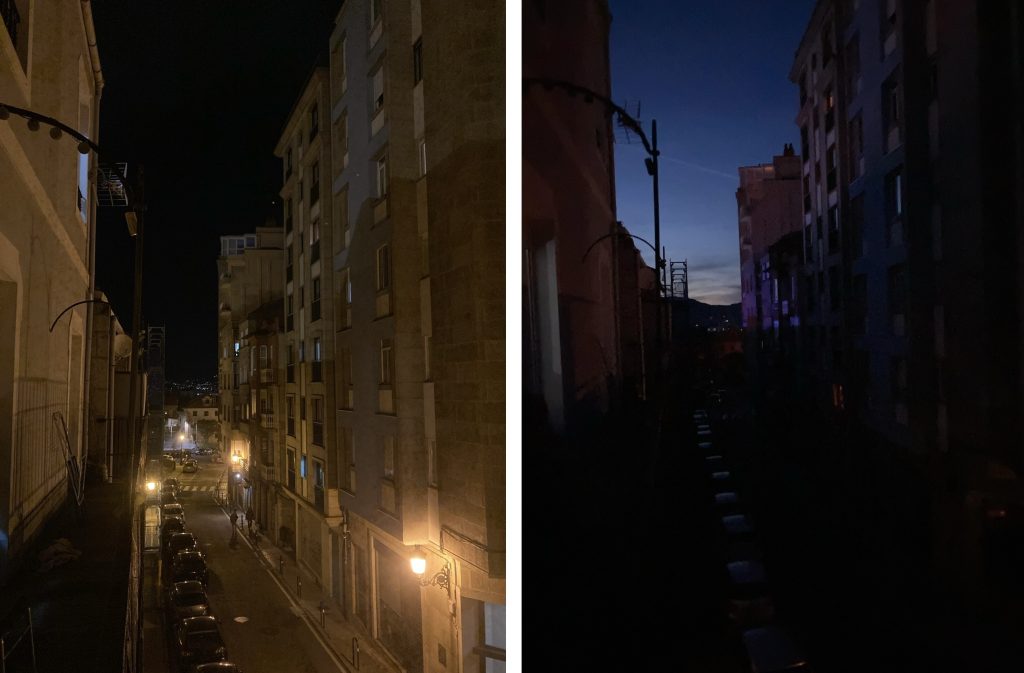
Species that are not so charismatic are quickly forgotten in this context. For example, the inconspicuous epiphytes – small growing photoautotropic organisms like unicellular microalgae or small filamentous macroalgae that colonize larger macroalgae and other solid surfaces. They make significant contributions to the services of marine benthic ecosystems by binding CO₂, stabilizing communities and providing food. At the same time, they also impair the performance of their hosts by reducing their access to light, CO2 and nutrients. Hence, a change in their abundances can have far-reaching consequences for benthic ecosystems. Yet, little is known about how they respond to artificial light at night.
There was already a GAME project in Vigo during which field experiments were conducted, but with a different scientific focus for which artificial light at night was not relevant. They were situated at the same location for which we had also received approval. Thus, we were relatively quickly confronted with the first hurdles in scientific field research – which many people don’t even realize!
The problem is that Marina Davila is located directly next to an industrial port, or rather, a large car transfer point, which is illuminated all night long with gigantic lights. It’s probably the brightest place in all of Galicia. Bad for our experimental control group, which was supposed to be in complete darkness at night. So, we spent the first week wandering around various harbor areas in the area at night, measuring the background illumination in order to find a better place for our experiments.
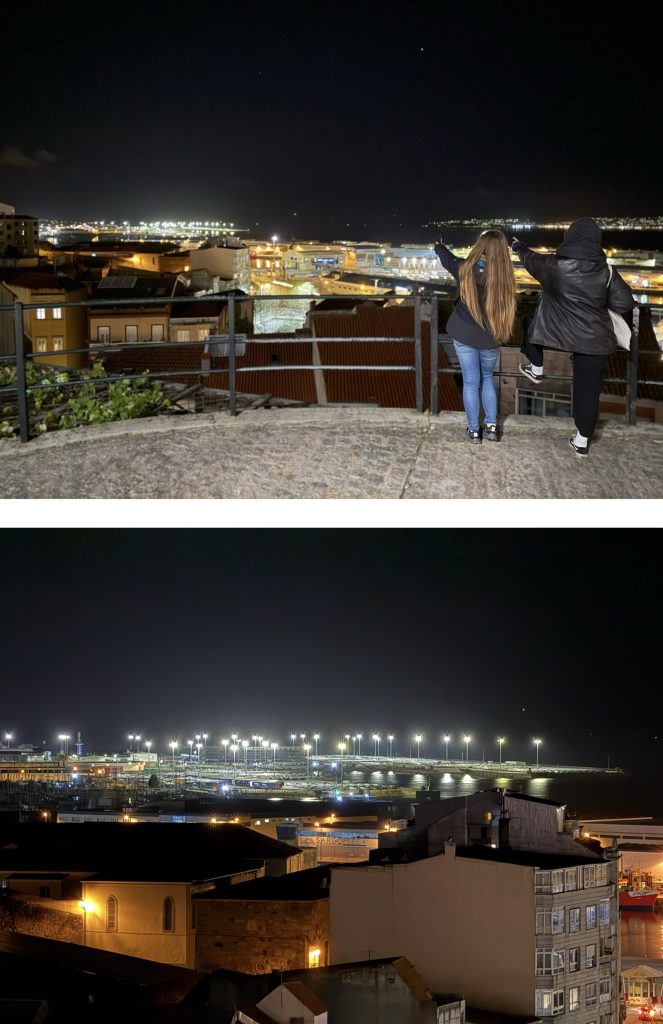
Fig. 10: Where was our study site supposed to be? We can show you! Right there (upper picture)! The brightest spot in the port. At a closer look all the cars that will be transported around the world are visible as well (lower picture). Photo: Anna 2025.
Thanks to the friendly harbourmaster at Marina Davila, we found a darker spot with even less wave exposure. However, we’re dealing with a tidal range of 4 meters, which could be tricky and is something we should keep in mind while planning our experimental setup.
Great! That was the first trick – and the second will follow quick.

Next, we need to find a suitable algae species and conduct initial trials – so-called pilot studies. This will allow us to determine the best options for our location and get a feel for the handling of the organisms, materials, and analytical methods.
Eva supports us wherever she can. As part of her own research, which focuses on plastic pollution in the ocean, we are able to accompany her one morning to the rocky bay near the institute. We were able to find different species of algae and marine organisms at low tide and also collect potential macroalgae for our project. However, the two more common Laminaria species here – Laminaria hyperborea or Laminaria ochroleuca – are difficult to distinguish from each other at a young age.
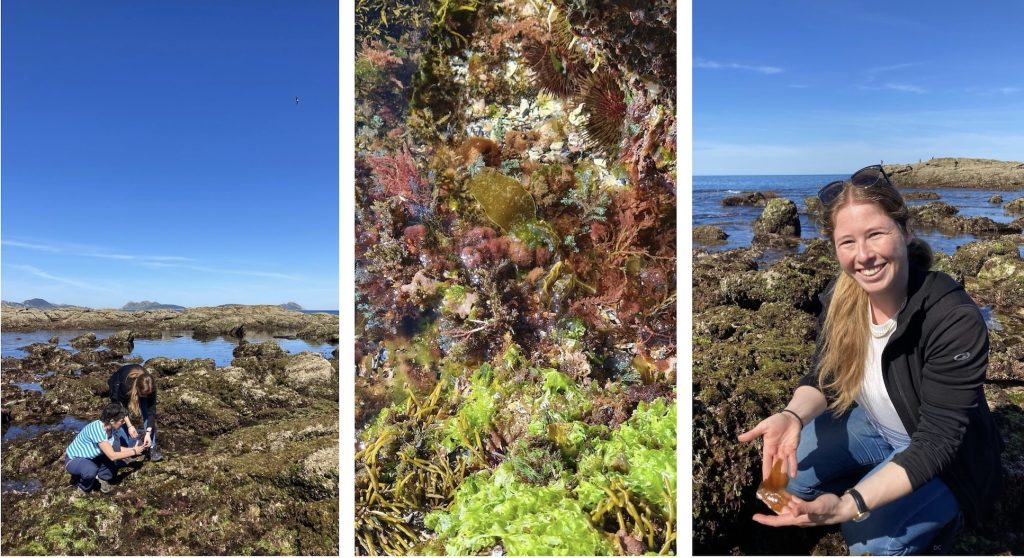
These were deployed the next day, along with other algae fragments, at our harbour site in a preliminary test. Now we just have to keep our fingers crossed that our setup holds and that it doesn’t get washed away… or even eaten by fish or invertebrate grazers.
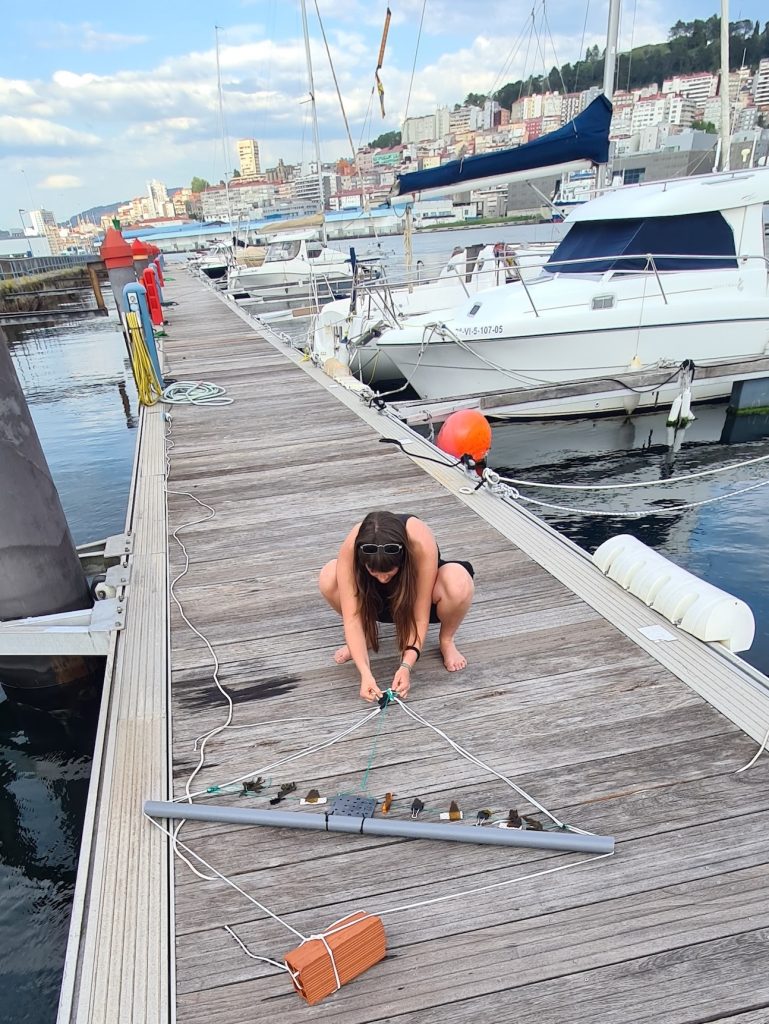
So, everything remains exciting.
In any case, we’re ready to diligently tinker and by this solve any problems that arise in the coming weeks.
Anna & Verena
